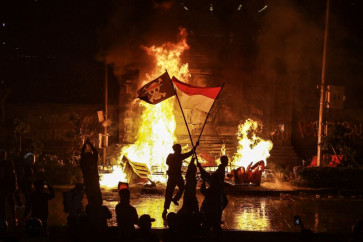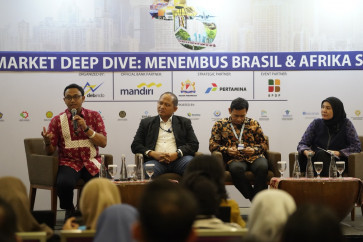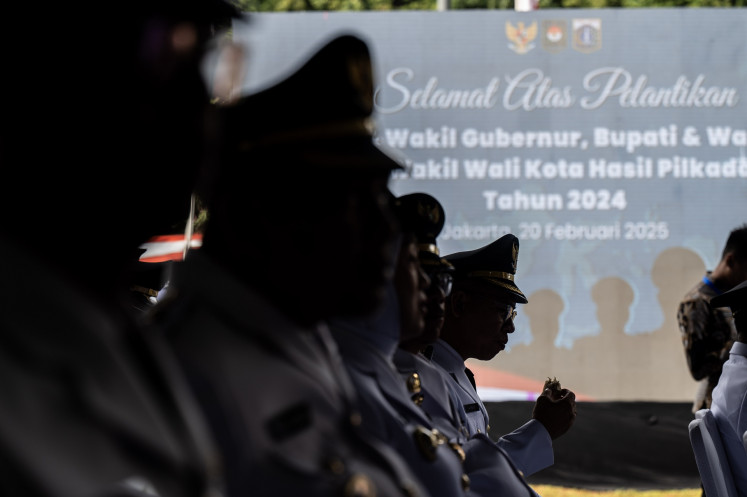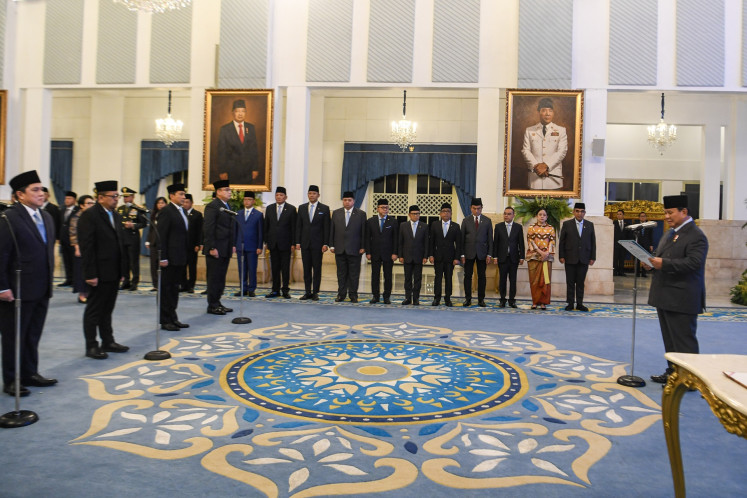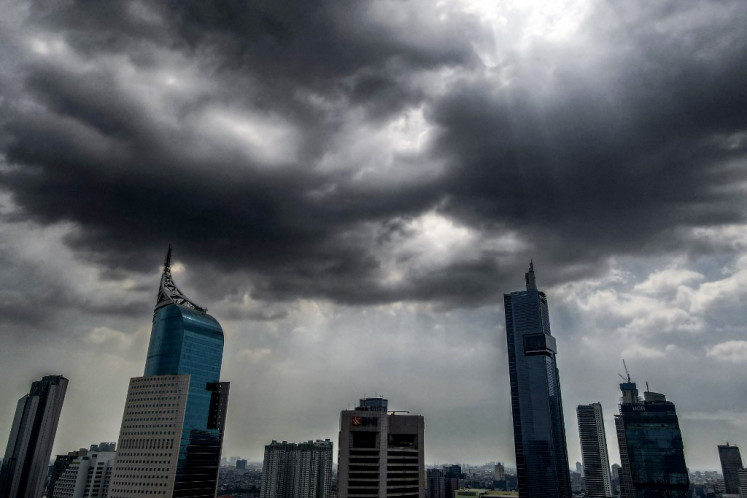Popular Reads
Top Results
Can't find what you're looking for?
View all search resultsPopular Reads
Top Results
Can't find what you're looking for?
View all search resultsIn Tune: ‘Dentum Dansa Bawah Tanah’: Electricity under the ground
Photos courtesy of Dentum Dansa Bawah Tanah/Robby Wahyudi OnggoBrewing beneath Jakarta’s mainstream perception of electronic music as merely EDM, projecting the art in festering venues or hip bars, lies an electronic scene that yearns to be heard and noticed not for its spectacles but for its moving sounds
Change text size
Gift Premium Articles
to Anyone
Photos courtesy of Dentum Dansa Bawah Tanah/Robby Wahyudi Onggo
Brewing beneath Jakarta’s mainstream perception of electronic music as merely EDM, projecting the art in festering venues or hip bars, lies an electronic scene that yearns to be heard and noticed not for its spectacles but for its moving sounds.
Released by Pepaya Records, Dentum Dansa Bawah Tanah (DDBT) is a compilation tape of 18 artists from Jakarta’s underground electronic music scene that aims to showcase the hidden sounds from a new wave of electronic artists that emanates under the night.
As Indonesian Indie rock settles comfortably within its stagnating rut, “indie” electronic artists are quietly making their headway through the scene, making their names known within the smaller, devoted circles that are curious as to what Indonesian electronic producers can do.
The mainstream’s main perception of electronic music is still heavily revolved around EDM: the DJ-based bombastic, overwhelming spectacle of buzzy, catchy synthesizer leads and 4X4 drum patterns, which is currently dying a slow, painful death even overseas.
In Indonesia, particularly in Jakarta, many feel that electronic music can mean so much more than the DJ culture.
Aldo Ersan Sirait, the head of Pepaya Records and the curator of the compilation, said that Jakarta still has a lack of electronic music producers who produce their own music and that even if there are many, most have yet to surface onto the music scene.
“What I want to see in the Jakarta music scene are producers who produce their own music and release their own albums. Many ‘electronic artists’ in Jakarta are usually limited to only playing DJ sets, akin to the Indonesian indie rock’s cover band culture of the 1990s,” Aldo said.
Underlining the importance of an aware media to the electronic scene’s development, he noted that Indonesian music journalists should write about local electronic artists the same way they would write about indie rock stars.
“Electronic music is not something that is foreign to our ears. Overseas underground producers such as Tornado Wallace [AUS] or Force of Nature [JPN] can draw crowds here, but we rarely see Indonesian acts attract that kind of interest,” Aldo said.
As a result of this interest, curious crowds are slowly beginning to take notice of Jakarta’s underground producers, evidenced by the success of recent events in venues such as Mondo By the Rooftop, FJ on 7 or Safehouse, which over the past few years have given the stage to leftfield acts.
The acts of DDBT themselves have cut their teeth playing at underground shows over years — some of them are already notable figures in the indie scene.
Future Collective, a trio of futurist-minded players, project an incredibly vintage sound that recalls 1970s Krautrock’s bare aesthetics, while producer Duck Dive, who before established himself as a textural synth wunderkind, has now shifted into the Balearic house sound.
Others such as Maverick channel the fierce industrialism of 1990s hip-hop, akin to how DJ Shadow or El-P weave their anger over old-school 808 drum beats.
The diversity expands further with an act such as John Van der Mijl, who plays around with the UK Garage sound, making his contribution to the compilation not out of place if played in a grimy London club in the mid-2000s.
The point of showcasing the different range of sounds on this compilation is simply to showcase the diversity of Jakarta’s underground electronic scene.
“What is notable about most of the compilation’s tracks is that it is the kind of music that had nothing to do directly with clubs or nightlife,” Aldo explained.
Part of the criteria for curation was that the artists chosen were done so because each of them had “rock” sensibilities.
Other criteria revolved around the fact the artists were not considered big names and they each had their own artist collectives to represent. The latter condition was crucial due to hopes of helping expose more producers to the fore as a result of being included in the DDBT compilation.
So far, all of DDBT’s 200 tapes have sold out, but plans to issue the compilation on CD is happening with the help of major label Demajors. It is planned for release at the end of this month.
But with this rise, Aldo’s main concern about Jakarta’s electronic scene is the threat of stagnancy such as what is happening in the indie scene, in the way that there are simply too many acts or events that offer the same sound.
“What’s popular now in terms of electronic music, I admit, is House or Deep House music. What I can hope for is that it doesn’t plateau in its rise.”
As far as trends come, Indonesia seems to always be at the tail end. When EDM exploded in the United States in between 2008 to 2010, it wasn’t until around a year later that the culture was truly embraced into the Indonesian consciousness.
Could the producer culture make its way into becoming a widespread activity? If the shy and the ignored start to come out and become noticed little by little, maybe there is a chance.


